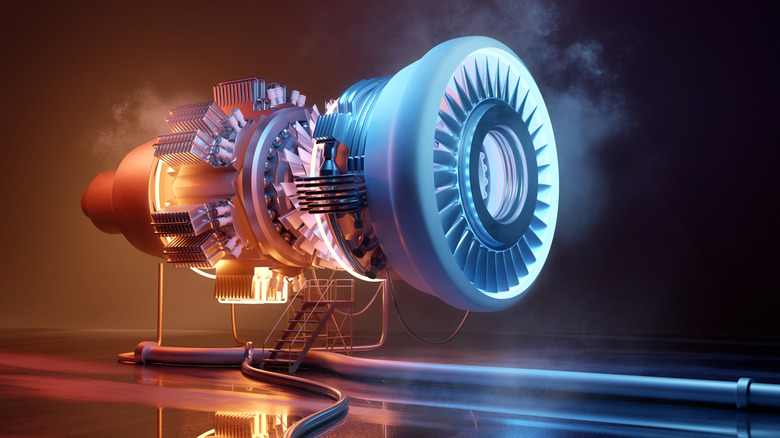This Jet Engine Uses No Fuel – Only Microwaves And Air, According To Researchers
Innovations in jet technology are happening all the time. This is due to modern advancements, which are leading engineers in new directions previously only theorized. The latest example is the plasma jet engine developed in China. This revolutionary new engine actually uses microwave and plasma technology as its foundation, which means it doesn't rely on traditional fuel or batteries as a source of power.
The plasma engine takes existing air and squeezes it down, then blasts it with microwave radiation. The frequency of the microwaves is actually quite low, and on a comparable level with what you'd expect out of the microwave in your kitchen. When the radiation comes into contact with the air, the end result is plasma. Plasma is a fourth state of matter, and when utilized effectively, can be an incredibly efficient source of power. Plasma has been harnessed in other places too, like the world's largest fusion energy experiment.
Because fossil fuels are not involved, the new plasma jet engine has zero emissions. That also means it doesn't expel any chemicals during operation, making it perhaps the cleanest jet engine ever constructed. In contrast, the majority of today's jet engines, including the most popular one found so many planes, produce huge amounts of carbon dioxide. Not only is carbon dioxide toxic, it's also adding to the problem of global warming and pollution, both of which have plagued the aviation industry for years. The new plasma jet engine could potentially help alleviate that problem, given enough time.
From diamonds to jet engines
The new plasma jet engine was initially conceived in 2020 by Professor Jau Tang at China's Wuhan University. Tang wasn't looking to create a plasma engine but instead wanted to use microwaves to create synthetic diamonds. Tang's research led him to the idea of a plasma thruster, which would use microwave technology. He believed that with the right design, that technology could eventually replace traditional aircraft engines, thus eliminating the need for gasoline.
Professor Tang's prototype can support a steel ball weighing just over 2 pounds up in the air. Though it may not sound like much of a step forward, the fact is that it's a beginning point for an engine that very well could become the standard for years to come. But it won't happen overnight, as the plasma engine would of course need to be much larger and have a rock-solid power supply before industry-wide adoption is even possible. Even if that happens, the engine would need to undergo rigorous testing beforehand to ensure it's ready to go.
While Tang's efforts are indeed impressive, he's not the first scientist to explore the possibilities of plasma power. In October 2025, Russian engineers revealed their own plasma engine prototype that could possibly travel to Mars in 30 days. NASA is experimenting with pulsed plasma rockets, and back in 2017, a group of researchers in Germany worked on building a plasma thruster, but they were unable to move it past the initial testing phase.

